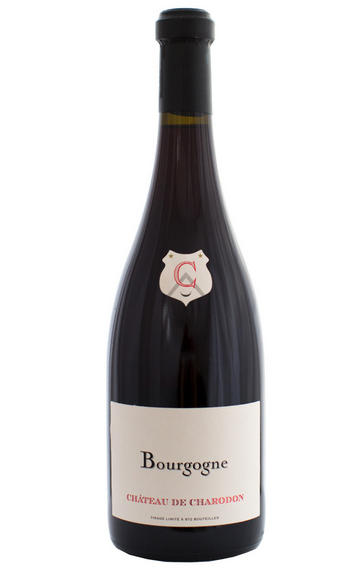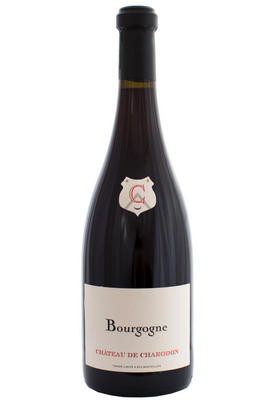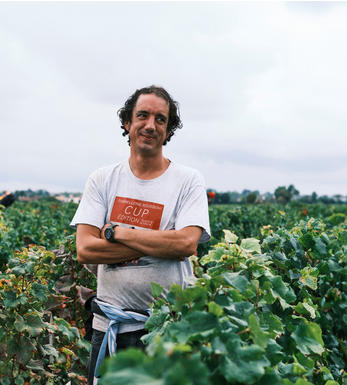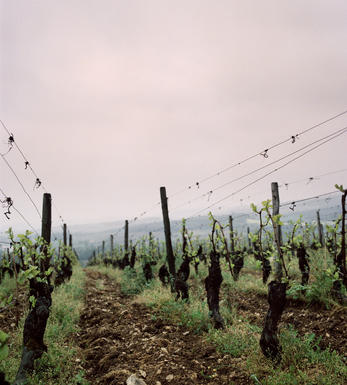
2021 Bourgogne Côte d'Or, Château de Charodon, Burgundy

About this WINE

Château de Charodon
Located just five minutes from Beaune, Château de Charodon is the project of Louis Vallet, his brother Thibault and their father, Bernard. The Vallet family is from Gevrey-Chambertin, where Bernard is still part-owner of the successful Pierre Bourrée estate. However, Louis decided to take a different direction. For many years, he lived the life of the flying winemaker, making two vintages each year: one in Burgundy and one in the Southern Hemisphere. He picked up experience from the likes of Pascal Marchand. He made his first vintage at Ch. de Charadon – a grand total of 1,200 bottles – in 2010. By 2021, he was producing more than 10 times this volume. While Louis stands to inherit several hectares from the family holdings, these are presently rented out on long term contracts; the production currently comes from a mix of bought-in fruit and farming contracts. This is a hugely exciting project which we are delighted to be a part of.
Louis’ production is growing quickly to keep up with demand, and he has made 42,000 bottles this year. The biggest struggle is perhaps renovating the buildings around the château to make more space for tanks and barrels. While he is always optimistic, Louis is clearly much happier with the 2022 vintage than the ‘21s. Last year, he was missing several cuvées because he couldn’t get hold of fruit, but ’22 has allowed him to make the full range of wines, and add a couple of new lines. In both colours, Louis has made the kind of wines that he likes; forward, fruit-driven and generous. Like him, these wines wear their heart on their sleeve.

Bourgogne Rouge
Bourgogne Rouge is the term used to apply to red wines from Burgundy that fall under the generic Bourgogne AOC, which can be produced by over 350 individual villages across the region. As with Bourgogne Blanc and Bourgogne Rosé, this is a very general appellation and thus is hard to pinpoint any specific characteristics of the wine as a whole, due to the huge variety of wines produced.
Around 4,600 acres of land across Burgundy are used to produce Bourgogne Rouge, which is around twice as much as is dedicated towards the production of generic whites.
Pinot Noir is the primary grape used in Bourgogne Rouge production, although Chardonnay, Pinot Blanc, Pinot Gris and in Yonne, César grapes are all also permitted to make up the rest of the wine. These wines tend to be focused and acidic, with the fruit less cloying than in some New World wines also made from Pinot Noir, and they develop more floral notes as they age.
Although an entry-level wine, some Bourgogne Rouges can be exquisite depending on the area and producer, and yet at a very affordable price.

Pinot Noir
Pinot Noir is probably the most frustrating, and at times infuriating, wine grape in the world. However when it is successful, it can produce some of the most sublime wines known to man. This thin-skinned grape which grows in small, tight bunches performs well on well-drained, deepish limestone based subsoils as are found on Burgundy's Côte d'Or.
Pinot Noir is more susceptible than other varieties to over cropping - concentration and varietal character disappear rapidly if yields are excessive and yields as little as 25hl/ha are the norm for some climats of the Côte d`Or.
Because of the thinness of the skins, Pinot Noir wines are lighter in colour, body and tannins. However the best wines have grip, complexity and an intensity of fruit seldom found in wine from other grapes. Young Pinot Noir can smell almost sweet, redolent with freshly crushed raspberries, cherries and redcurrants. When mature, the best wines develop a sensuous, silky mouth feel with the fruit flavours deepening and gamey "sous-bois" nuances emerging.
The best examples are still found in Burgundy, although Pinot Noir`s key role in Champagne should not be forgotten. It is grown throughout the world with notable success in the Carneros and Russian River Valley districts of California, and the Martinborough and Central Otago regions of New Zealand.


Buying options
Add to wishlist
Description
The 2021 Château de Charodon Bourgogne Côte d'Or is made from 5 different parcels of Pinot Noir, all in the lower part of Pommard. The fruit is entirely destemmed and there is no new oak, allowing the pure, crunchy, red berry fruit to express itself. The Pommard origin gives just the right amount of structure to merit a little ageing.
Drink 2023 - 2027
Berry Bros. & Rudd
wine at a glance
Delivery and quality guarantee